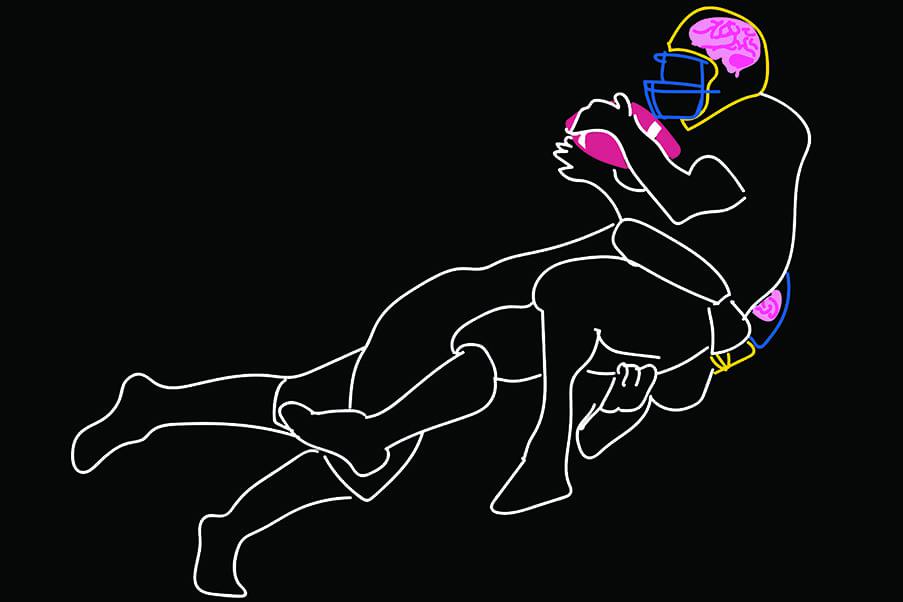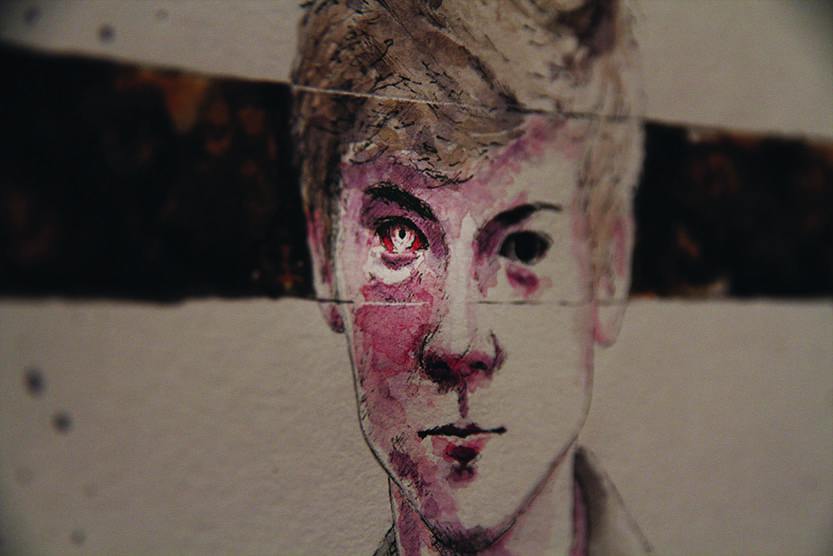Centre for Kinesiology’s study to tackle concussions

author: taylor balfour | news writer

the nature of banged up brains credit ella mikkola
How much do we really know about sports related injuries?
Concussions from contact sports are no new problem in Canada. Just this year, Global News claimed that it was an “epidemic problem in Canadian kids.” However, what does this mean regarding the general knowledge of concussions and how they are diagnosed and treated?
University of Regina’s Dr. Patrick Neary has been conducting baseline tests on athletes citywide, hoping to answer these questions with a variety of types of research.
“I think most people are starting to learn that you can get a concussion without hitting your head,” Neary claims. “A concussion is the movement of the brain inside the skull. We know that helmets aren’t going to prevent concussions.”
Clearly, that’s been the case. The Government of Canada claims that there’s been a 40 per cent increase in head injuries since 2004. With the numbers continuing to climb, what does this mean for students and athletes who have been affected by such head trauma? According to Neary, it is more serious than a first glance would suggest.
“Some of the previous research that we’ve done in the lab has shown that the heart is actually affected,” Neary states, going on to explain in depth. “It’ll go back to normal, but in that short period, the heart contracts ‘mushy.’ It doesn’t snap like it’s supposed to, it’s a little bit slower because the messages from the brain to the heart are disrupted. It’s something called the ‘autoregulation’ of the brain.”
However, the disruption of such a function is not all that is affected. There are far more long-term side effects that could remain.
Cornell Medical College in New York goes into detail describing exactly what “post-concussion syndrome” (or PCS) is, explaining that it “can include physical, cognitive, and emotional problems.” The effects remain far after the initial impact and treatment, and that is exactly what Dr. Neary’s research is attempting to uncover.
“With a group from Campbell High School, we’re doing baseline testing where we’ll monitor the physiology of their brain, and if they happen to get a concussion, they’ll come back to us and then we’ll continue to monitor. We’ll follow that up whenever it is they’re back to play,” Neary explains. “And then what we want to do at the end of the season is to repeat that with everybody who’s come in, to see whether or not a season of football has had an effect on the physiology of the brain.”
Previous cases of multiple head traumas in Canada have led to death, like Ottawa’s Rowan Stringer. Global News reported on the 15-year-old’s death from Second Impact Syndrome, reporting that she “suffered two concussions earlier that week that were undiagnosed.” Second Impact Syndrome occurs when one suffers head-related injuries, one after another.
What does such information mean regarding how concussions are diagnosed and treated? Do we need to change the system? Neary goes on to explain what the current method of diagnosis is.
“Right now, if you get a concussion, you have to go to your doctor and he or she may do some tests on you,” he explains. “Then they would assess you based on how you perform.”
Neary also says that their research could create a new way of diagnosis.
“Right now we don’t have an objective diagnostic measure for concussions. It’s subjective and your physician has to do that.”
However, he has hopes for the impact their research can leave.
“We’re hoping that we can achieve some sort of a diagnostic measure to say yes or no, and potentially even what grade of a concussion you actually have.”
Considering that anyone affected by head trauma could have a different grade of severity, this also means that recovery for anyone affected would need to be different.
“It’s very, very individualized,” Neary explains, regarding a concussion experience. Another goal they have is to hopefully help shape “proper recovery management.”
“That again is a really, really difficult thing, because every concussion is individualized and the individual experiences whatever it is that they’re experiencing,” he explains. “We’d really like to be able to counsel them on what’s the best way to recover. What should we be doing? How much exercise should we be doing? When should you be pulled back? And when can you safely go back to play?”
However, this study is doing more than uncovering information. It’s also helping athletes take care of their health and proceed forward with caution and protection. Even taking precautions in case a concussion were to occur.
“Over the summer we did baseline testing to provide clinical information so that the doctors can look at that for them to make a decision on what is the medical condition,” Neary explains. “We’ve been collecting clinical data on them to provide a profile for them going forward. So now, when someone comes to this university, they can feel very, very good in the fact that their medical and health information is right up to date and is a standard of care. That’s probably the best way to look at it.”
It’s a system that’s going to help students keep their medical health in check.
“We’re trying to provide that standard of care for our athletes through our center.”
The work Dr. Neary’s study has been conducting has been wonderful, although his reason for performing these tests is even more important.
“For awareness,” He assures. “To bring a greater awareness to people who play contact sports that concussions are not something that you can take lightly and I think that’s really key.”
The Government of Canada claims that 64 per cent of emergency room visits from youth between the ages of 10-18 are head trauma related.
“The information that we’re collecting and researching is to let the public know that concussions potentially could be life changing, and they have been.”
The most important piece to take away from it all would be Neary’s final statement on his research.
“If we can bring some greater awareness and education to this whole area, that would be great as well.”
Indeed, for the sake of the health of future and current athletes, it would be the best possible outcome.









An excellent article, informative and well written. I had no idea that concussions affected heart functioning. Thank you, Ms Balfour.